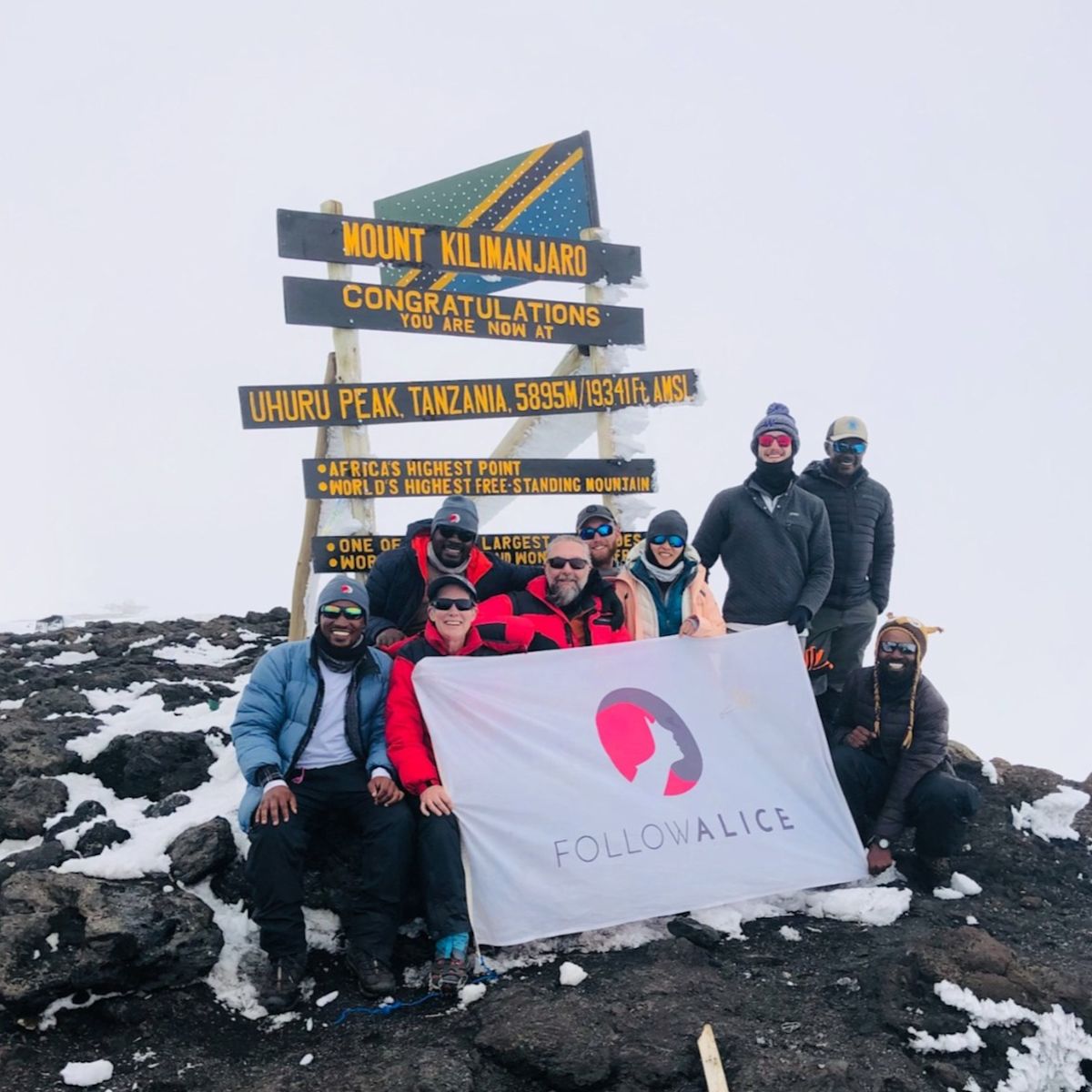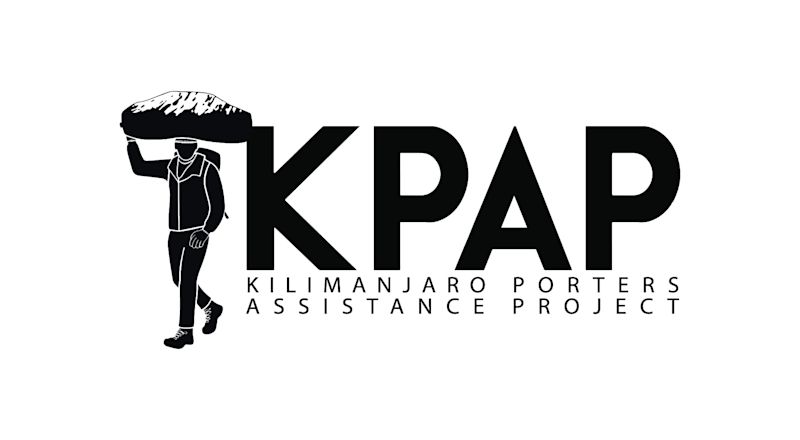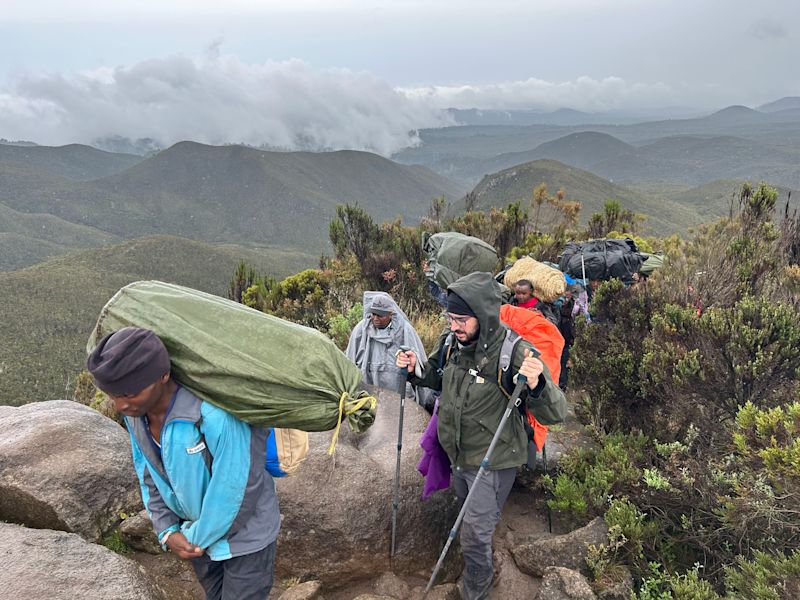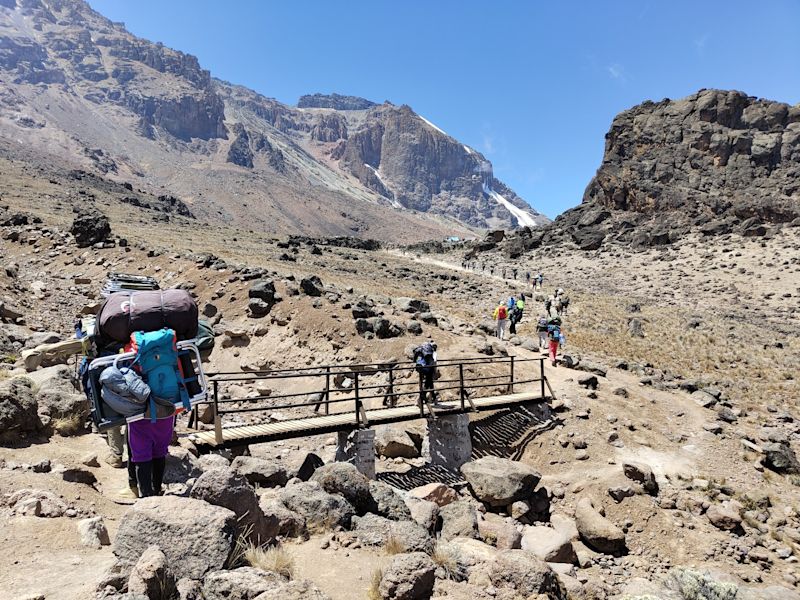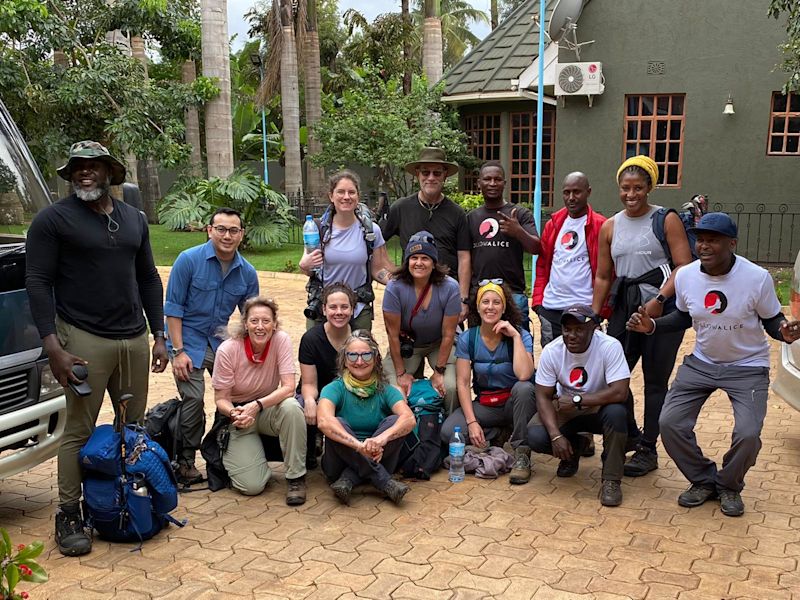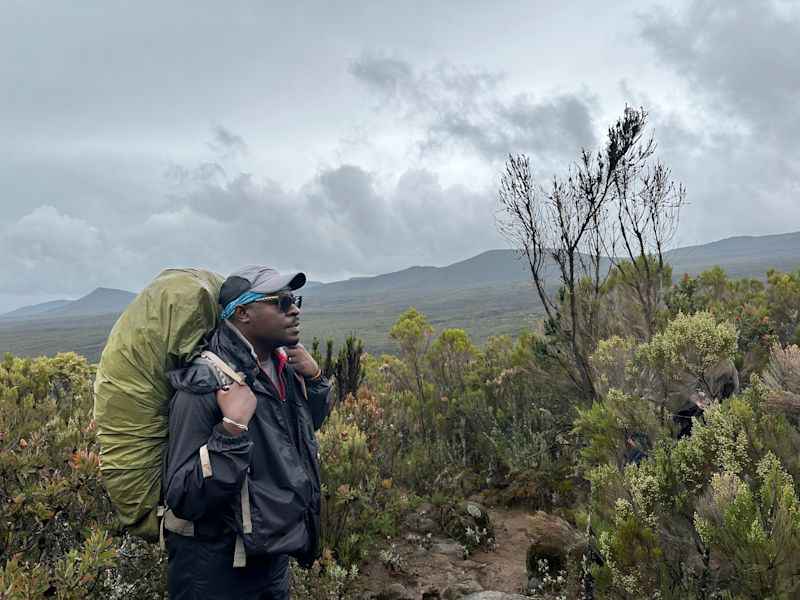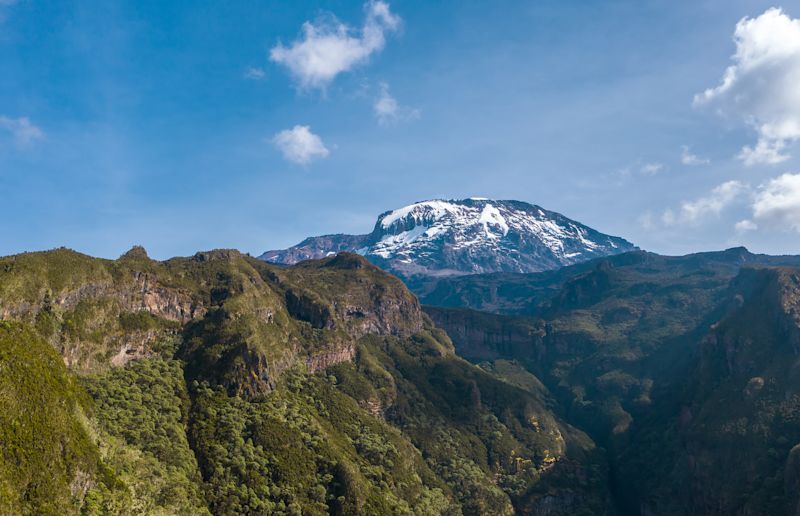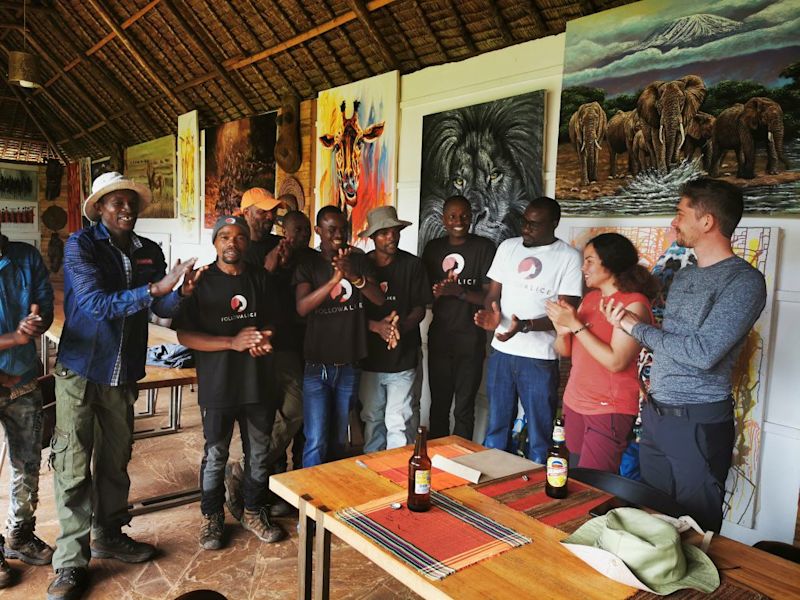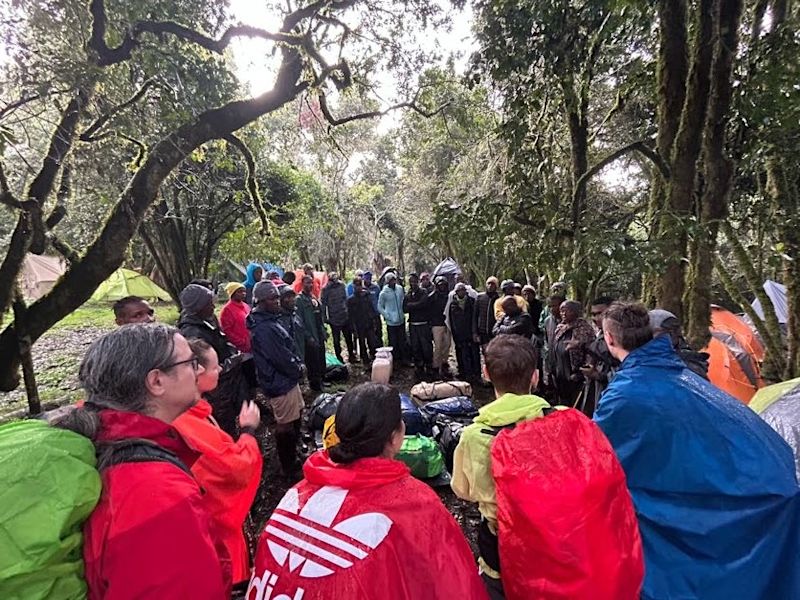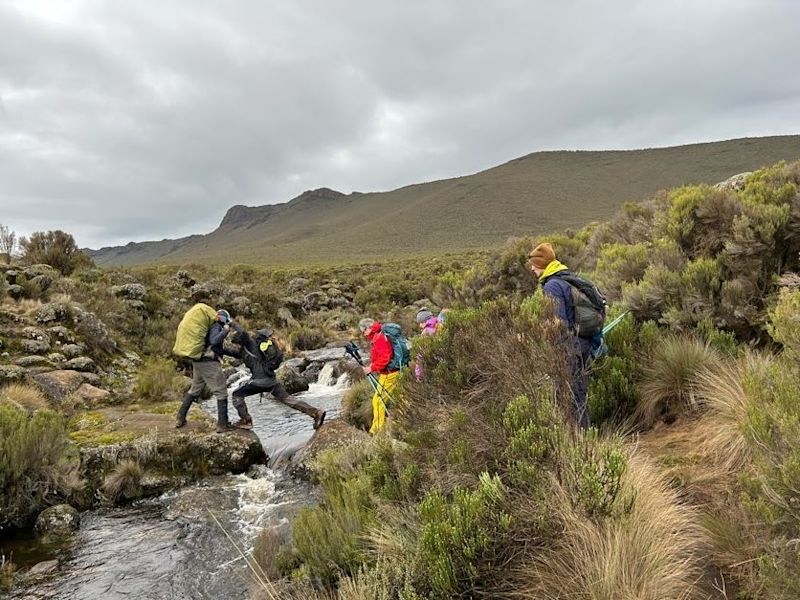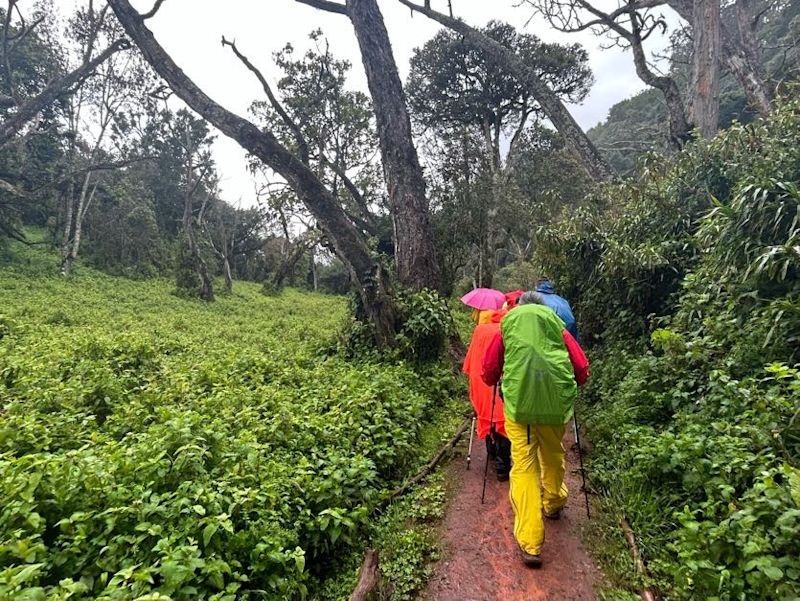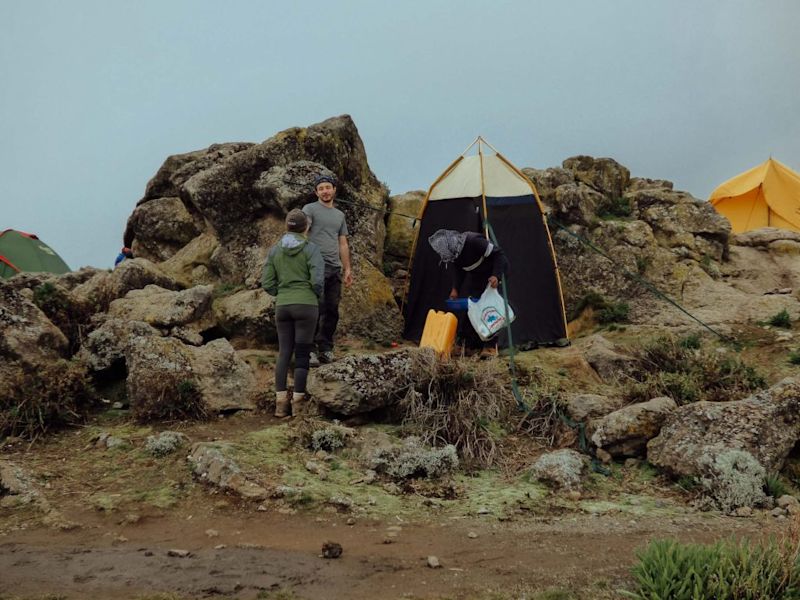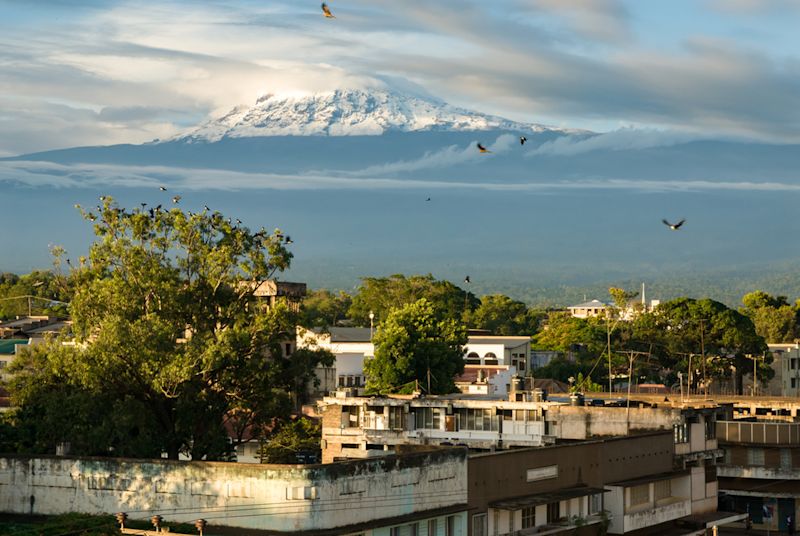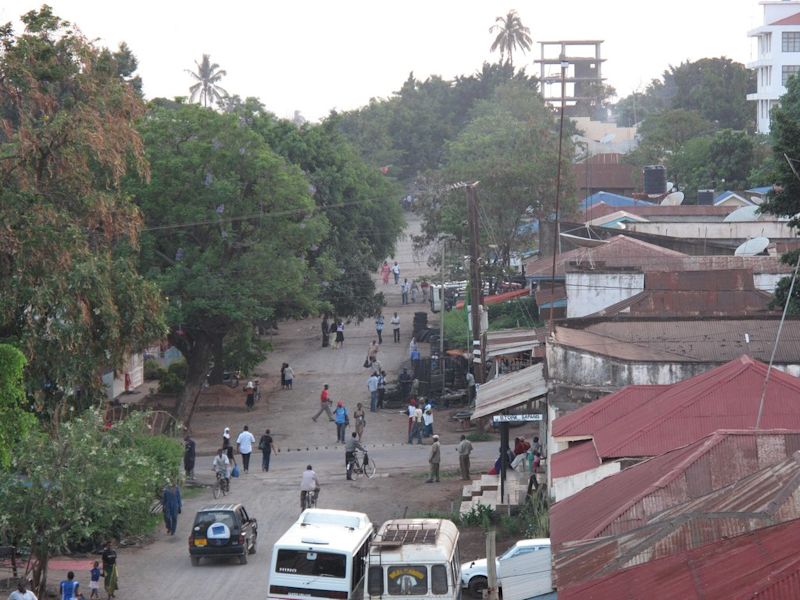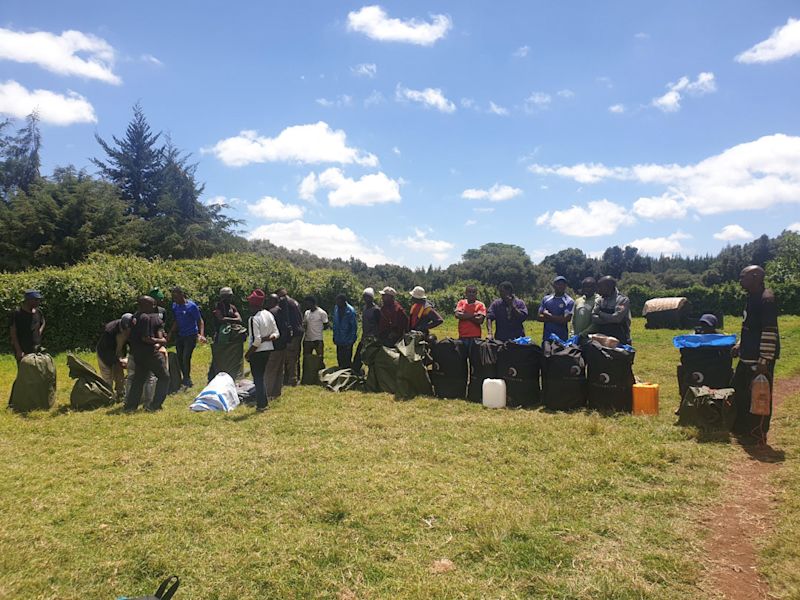Sustainability in tourism is an important issue. And one we all need to think about. We're pretty sure that you agree with us here, since you're reading this!
In this post we discuss seven ways that you can ensure you climb Mount Kilimanjaro in a way that's sustainable for both the environment and the local community.
Please note ...
You cannot climb Kilimanjaro on your own – you must, by law, climb with a registered tour operator. So a big part of what we discuss below is about how to choose a good and reputable tour operator that looks after its staff as well as the environment.
1. Use a KPAP-approved tour operator
The Kilimanjaro Porters Assistance Project (KPAP) is an NGO that looks after the well-being of porters.
Sadly, not all Kilimanjaro tour operators treat their porters well. We're referring here to underpayment, as well as not providing porters with adequately warm clothing, not giving them three meals a day, and overloading the packs they must carry.
Porters are basically real-life superheroes!
Tour operators affiliated with KPAP voluntarily undergo monitoring activities to ensure that their porters are being paid and treated fairly. The vetting system used by KPAP is rigorous, so you can feel confident that tour operators with the KPAP stamp of approval are looking after their porters properly.
Needless to say, Follow Alice is a proud KPAP member!
Our client Frederik took this pic of some our hardworking porters en route to Lava Tower
To be a sustainable and responsible traveller means only using companies that treat their staff well. On a Kilimanjaro climb, this translates to a company that looks after its porters as well as its other mountain crew members: lead guide, assistant guides, and cook.
Kilimanjaro mountain crews work incredibly hard and deserve to be paid and treated well by their employer!
Pic of Lee and his climb group with their mountain crew
A Kilimanjaro tour operator doesn't have to be a KPAP partner to treat its mountain crew well. But since it's hard for you as a potential client to know which companies do or don't treat their crew fairly, looking for a KPAP affiliation is the easiest way to feel confident about the good ethics of your potential tour operator.
KPAP member companies, for instance, must pay their porters the industry minimum wage. They must also ensure they have adequately warm clothing and receive proper nutrition on the mountain. And they must also look after their health on their mountain.
So if you want to be a responsible traveller and Kilimanjaro climber, please check that the tour operator you want to use is listed on the KPAP website!
For a few special days, your climb group and mountain crew are like family
2. Climb with properly trained guides
You only want to climb Kilimanjaro with guides who have undergone accredited wilderness safety training and regularly update their skills. Every year people die on Kilimanjaro. Maybe it's because you don't need mountaineering skills to climb it, but people often underestimate Kilimanjaro and what's required to successfully and safely scale it. Don't be one of them!
Great pic by Romy of Robert, one of our Tanzania directors and lead guides
So yes, well-trained, experienced and certified guides are critical to your safety on Kilimanjaro. Ask any potential tour operator about their guides' training and experience. If you want to be really sure that they're up to snuff, you could ask them to share with you their evacuation plan for medical emergencies. If they don't have one, don't travel with them!
At Follow Alice all of our lead and assistant guides are trained as Wilderness First Responders and Wilderness First Aiders. They attend the well-respected Sentinel Outdoor Institute to obtain these certifications. They also do annual refresher courses to keep their skills laser sharp.
The Umbwe route is often used for evacuation as it's the shortest route down the south side of the mountain
We also have well-established evacuation protocols so that our guides know exactly what to do and what routes to take in medical emergencies that require a client to descend or be carried down the mountain.
As such, you can know that if anything goes wrong on your Kilimanjaro climb, they'll be well-equipped to know how to respond to look after you.
3. Tip your mountain crew
Another important way to be a responsible Kilimanjaro climber is adhering to the custom of tipping your mountain crew.
Tipping on Kilimanjaro is not compulsory, but it's an important and very well-established custom. In fact, KPAP has strict outlines around how its member companies should conduct the 'tipping ceremony'. It even scrutinises the literature you give clients that advise them on how much to tip, as well as the manner in which the tipping ceremony should be run.
One of our tipping ceremonies in action
The tipping ceremony is a big topic, so we encourage everyone who has booked a climb to read Kilimanjaro tipping before heading to Tanzania.
That said, it might be useful for us to make just a few points about it here:
- Sometimes people ask why the industry doesn't increase salaries and do away with tips. A decent question. But tips aren't incorporated into salaries as mountain crews themselves like the motivation of receiving a potentially big tip if they give really good service. Also, they like to keep their wages below the tax bracket and then receive non-taxable tips as a way to supplement their income.
- Tips and the tipping ceremony are a way of honouring the hard work and support provided by the mountain crew. We've never met a climber who didn't want to tip their crew (and tip them well!) at the end of a climb.
- Depending on the size of your climb group, the overall amount that you need to personally budget towards your group's tips can be sizeable. Usually, the smaller the group, the heftier your personal contribution to the overall tip will be. Please include your tip amount in your Kilimanjaro budget. You can learn more on this topic in How much does it cost to climb Kilimanjaro?
It takes a big team to stage every Kilimanjaro climb
4. Adopt eco-friendly trekking habits
Some trekkers leave disaster in their wake, while others barely leave any evidence that they were there. To be the latter, you need to have the right attitude, do some research, make some preparations, and then follow through when on the trail with the principles you've committed to beforehand.
Another great pic from Romy of trekkers in the moorland of Kilimanjaro
Here are a handful of ways to be a sustainable and responsible trekker when climbing Kilimanjaro ...
Stay on the trail
As we discuss in 7 ways to reduce your eco footprint when hiking, trekking or camping, every time you step off a trail, you damage vegetation. And some of that vegetation could be endangered. You also possibly squash small critters and destroy their homes or handiwork.
We can't see or understand all the tiny impacts of our footfalls, so it's better to just not make them at all!
Minimise your environmental footprint by keeping your actual footprints on the trail
Be thoughtful about going to the toilet
When some of our Tanzania team joined a group clean-up on Kilimanjaro in late 2022, we had a front-row seat to just how much litter (especially toilet paper) is left on Kilimanjaro. We hate seeing refuse on the slopes of this beautiful mountain we all love!
Some of our team picking up used toilet paper on Kilimanjaro
As we discuss in Toilets on Kilimanjaro, you need to please make a proper effort around the whole toilet situation if you're going to climb Kilimanjaro responsibly! This involves popping certain items into your Kilimanjaro packing list, like a small trowel for digging a hole for faeces (and then covering it up) when nature calls outside of camp.
Women could also consider bringing a urinating device like a Shewee that allows you to pee while standing up and eliminate the need for toilet paper when on the trail. We discuss this and other such ideas in Advice for women climbing Kilimanjaro.
A Follow Alice toilet tent
Finally, try to go to the toilet just before leaving camp to possibly eliminate the need to go when on the trail.
Follow the Leave No Trace principles
We're a proud partner of the NGO Leave No Trace (LNT). In fact, in 2022 they held a workshop with our Kilimanjaro mountain crew to help brush up their knowledge of how to protect the environment when on climbs.
Our team received certificates from LNT after the 2022 workshop
But of course we need guests as well as mountain crews to make an effort to look after Kilimanjaro's ecosystems.
Please read and commit to LNT's seven principles, which are about how to be a sustainable and responsible trekker and camper. These principles include matters that we've already touched upon briefly, like sticking to the trail so that your presence leaves as little a mark as possible. But they also look at other matters like how to be respectful of other climbers and how to avoid disturbing the wildlife.
5. Support the local economy
As we discuss in What we care about at Follow Alice – besides our clients!, it's important to combat economic leakage if you want to be a sustainable traveller. Economic leakage is where the profits from tourism go to international stakeholders rather than local ones.
Multinational hotel chains, for instance, usually don't benefit the local economy and households the way that locally owned hotels do. So the ideal businesses to support when visiting Tanzania are those that are locally owned, or those that employ mostly locals, including in positions of management.
The city of Moshi with Kilimanjaro in the background
There's a strong informal economy in Tanzania, and when you head there for your Kilimanjaro climb, you'll likely spend at least a day or two on either side of your climb in the cities of Moshi or Arusha. While here, consider supporting informal markets and street vendors. Your money goes a long way here.
We also want to point out that you'll be benefitting the local community just by choosing to climb Kilimanjaro. This is because almost all of the men and women in Kilimanjaro's various mountain crews grew up and live in the region. Kilimanjaro climbs are usually their main or only source of income.
Further to this, the need for accommodation for Kilimanjaro climbers before and after the trek has also created a thriving hospitality industry, which of course creates many jobs.
Another nice thing to know is that those who work for Kilimanjaro National Park, or in jobs linked with it, also benefit from people coming to climb the mountain. Every climber must pay a daily fee just to be in the park, and of course a portion of those fees are used to pay park employees' salaries as well as suppliers.
A street scene in Moshi
While you're on Mt Kilimanjaro itself, you won't be able to support local businesses beyond the tour operator you've chosen. But it's good to note that all Kilimanjaro tour operators have to be registered in Tanzania. That said, you might like to ask some further questions of a potential tour operator to find out about their business model and how much money stays in Tanzania.
At Follow Alice, at least 70% of your Kilimanjaro package fee stays inside the country, mainly in terms of paying your mountain crew's salaries, buying supplies, purchasing your accommodation, and covering park fees.
We can therefore confidently say that a Kilimanjaro climb with Follow Alice is benefitting the local economy and community!
Many porters rely on their Kilimanjaro climb wages as their sole source of income
If this topic interests you and you'd like to learn more, please read How to travel responsibly and sustainably in 2023.
6. Support local conservation efforts
As mentioned, all climbers must pay a daily fee for a permit just to be in Kilimanjaro National Park. At Follow Alice, this fee is included in your package price, and we do the admin of obtaining your permit for you. But the main point here is that your park fees help towards the upkeep and conservation efforts of the park.
This means a Kilimanjaro climb helps with local conservation efforts.
Black-and-white colobus monkeys live in Kilimanjaro's forest
The flora and fauna of Mt Kilimanjaro's five ecosystems include many endemic, rare and even unique species. There's the Kilimanjaro impatiens, for instance, a pretty flower that grows in the rainforest encircling the mountain and nowhere else in the world.
When it comes to animals on Kilimanjaro, the Abbotts' duiker, for instance, lives solely on Kilimanjaro and in two other small spots in Tanzania. Protecting the habitats and populations of the mountain's various wild creatures is of utmost importance, we're sure you'll agree.
The moorland band in particular is home to many unusual species of vegetation
Of course you might like to go even further towards helping with local conservation efforts during your trip to Tanzania.
You could look, for instance, into supporting conservation initiatives like reforestation and habitat restoration efforts in the area adjacent to Mt Kilimanjaro. One example, as we discuss in The 10 best things to do in Kilimanjaro region, is to plant a tree in Rau Forest before or after your climb. This is just one small way to help in conserving this beautiful corner of the world.
Finally, if you're really concerned about the environmental impact of your travels, you might like to read Ways to reduce your carbon footprint when travelling.
Our client Eva took this great pic inside the rainforest on Mt Kilimanjaro
7. Be a respectful tourist
As we discuss in What is conscious travel?, we should all do our best to act respectfully and engage fully when in a new society.
Knowing a few local phrases really helps to grease conversations and promote good will!
A few examples of ways to be a thoughtful, engaged and respectful traveller in Tanzania are:
- Learn a few local phrases of Swahili to show you're willing to make an effort. It's especially nice if you can use local titles of respect for elders.
- Really listen to locals and ask respectful questions to learn more about their story, and so on.
- Refrain from making any vocal criticisms about local habits, situations and so on in public.
- Make an effort to learn about the local custom around tipping (not just relating to your Kilimanjaro climb, but in other environments too).
- Read through Kilimanjaro National Park's rules and stick to them, whatever your opinion about their validity.
This list could go on and on. The beating heart of all such suggestions is that we all adopt a respectful and learning attitude, and do our best to be good visitors. 😊
